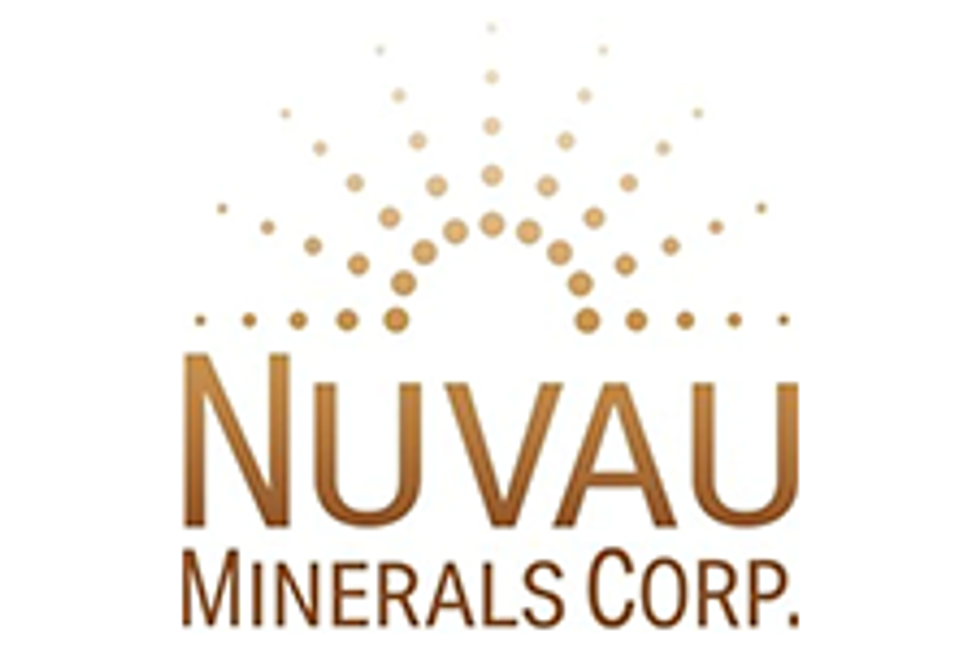Pasinex Makes New Zinc Oxide Discovery At The Spur Project In Nevada And Verifies High Grade Zinc Oxides: 43.9 Metres @ 14.2% Zinc Including 13.7 Metres @ 26.1% Zinc And 5.6 Ounces Of Silver

Pasinex (CSE:PSE, FSE:PNX) (“Pasinex” or the “Company”) is pleased to present assay results as a follow up to its news release dated August 8th on its exploration drilling program at the Spur Zinc Project in White Pine County, Nevada.
Pasinex (CSE:PSE, FSE:PNX) (“Pasinex” or the “Company”) is pleased to present assay results as a follow up to its news release dated August 8th on its exploration drilling program at the Spur Zinc Project in White Pine County, Nevada. The new discovery of black-shale hosted zinc sulphides radically changes the exploration potential for the project.
- Diamond drill hole SRDD-2018-004 intersected black-shale-hosted zinc sulphide 50 metres south and down-plunge of drill hole SRDD-2018-001: 9 feet (2.74 metres) averaging 8.1% zinc from 289 feet (88.1 metres) and 11 feet (3.35 metres) averaging 5.7% zinc from 304 feet (92.6 metres).
- The Spur Zinc zinc oxide mineralisation was previously interpreted as the shallow enriched supergene zone of a carbonate replacement deposit (CRD). The exploration focus has now switched and is now focused primarily on the black shale and the potential for a major shale-hosted-massive-sulphide (SHMS) mineralizing system on the property
- Diamond drill hole SRDD-2018-001 drilled through the core of RH Main Zone: 144 feet (43.9 metres) averaging 14.2% of oxide zinc from 142 feet (43.3 metres) – including 45 feet (13.7 metres) averaging 26.1% zinc and 242 grams per tonne1 silver (5.6 ozs) from 160 feet (48.8 metres).
- The black-shale hosted zinc sulphides intersected in SRDD-2018-004 was not expected and completely transforms the exploration model which is now focused on assessing the potential.
- High-grade zinc oxide mineralization intersected in this initial drill-phase is shallow and still a priority target along the known three to four-kilometre mineralised trend.
- Oriented drill-core has greatly improved understanding of the geology, structure, and mineralization.
The project location is in northeastern Nevada where infrastructure and mining services are excellent and where mining is a major part of the State economy.
Last month Pasinex announced completion of an initial drilling program of four inclined diamond drill holes at the Spur Zinc Project for a total of 2,291 feet (698 metres). The results of which are included in Table 1 below.
Table 1: Summary Highlights of Drill Assay Results
| Drill Hole # | Core Length
Interval Metres | Zn Grade % | From (metres) | Mineralization |
| SRDD-2018-001
Including | 43.89
13.72 | 14.2
26.1 | 43.28
48.77 | Oxide in Limestone
Oxide in Limestone |
| SRDD-2018-002 | 0.61 | 10.8 | 60.96 | oxide in limestone |
| SRDD-2018-003 | NS | NS | NS | n/a |
| SRDD-2018-004
SRDD-2018-004 SRDD-2018-004 | 1.5
2.74 3.35 | 4.3
8.1 5.7 | 85.65.
88.1 92.6 | Oxides in fault zone
Sulphide in black-shale Sulphide in black-shale |
Notes:
All holes and sampling intervals are recorded in feet and converted to metres.
All holes Inclined to east for the first time – azimuth 090° and inclination at between 55° or and 60°.
True widths estimated at 75% – 80% of drilled-length – assume mineralization conformable with steeply dipping host rocks.
Core recovery was consistently greater than 90%.
All drilling was recorded in feet and core sampling intervals were on either two or three foot intervals.
A figure accompanying this announcement is available at https://www.globenewswire.com/NewsRoom/AttachmentNg/9af6ffbf-053e-4e65-b0a0-3428197299d8
Pasinex CEO Mr. Steve Williams said “This is a very encouraging start to our drilling at the Spur Zinc Project. It was very unexpected and a big bonus to intersect zinc sulphides in black shales so close to surface. High grade zinc was discovered on the Spur Zinc Project almost 30 years ago. This new discovery of zinc sulphides in black shales completely opens up new exploration possibilities for a much larger zinc mineralizing system. This first small drilling program was very carefully planned and now we have a much better understanding of the geology, structure and nature of the mineralization for drilling going forward.”
Table 2: Drill hole collar locations
(UTM Z11 NAD83)
| Hole Name | Zone | Easting | Northing | Elevation (metres) | Azimuth | Dip | Drilled Length (metres) | Drilled Length (feet) |
| SPDD-2018-001 | RH Main | 606697.5 | 14414367 | 1992 | 090 | -60 | 139.3 | 457 |
| SPDD-2018-002 | RH Main | 606672.1 | 14414345 | 1996 | 090 | -60 | 201.2 | 660 |
| SPDD-2018-003 | RH Main | 606626.9 | 14414314 | 1995 | 090 | -50 | 216.1 | 709 |
| SPDD-2018-004 | RH Main | 606687.9 | 14414326 | 1986 | 090 | -60 | 141.7 | 465 |
This is the first time at the Spur Zinc Project that significant zinc sulphide mineralization in black-shales has been identified. These mineralized intersections are at potential economic thicknesses and grades. The shale-hosted mineralization was unexpected and presents new and exciting potential for a Shale-Hosted-Massive-Sulphide (SHMS or ‘Sedex’) deposit.
A black-shale was intersected from 459 feet to 604 feet in drill hole SRDD-2018-003 but no visible sulphide mineralization was observed. Pasinex will now review the old RC drill logs (completed by Cyprus Development Corp.) and re-log the drill holes to search for the black-shale which may not have been identified; and then re-assay if necessary. The next phase of drilling will target the black-shale for SHMS potential. The extent of the black-shale can either provide the “room” for a major deposit or constrain potential size. The extent of the black-shale will depend on the size and depth of the basin in which it was deposited. Pasinex has begun to re-evaluate the potential for the Spur Zinc Project based on the discovery of black-shale-hosted sulphide mineralization. Even at this early exploration stage a possible good mineral deposit exploration analogue for Spur of a zinc-rich Sedex deposit to keep in mind ,which is currently in the news, is Fireweed Zinc’s (TSX-V) Macmillan Pass Project in the Yukon.
The objectives of this completed diamond drill program were stated in a Company news release on May 14th, 2018, namely (i) to drill fully through the footwall contact of the Pennsylvanian-age Ely Formation limestone host into the pediment and verify oxidised high-grade zinc mineralization in the heart of the RH Main Zone (ii) to test a target down-plunge from the known mineralized zone, and (iii) for the first time to measure the orientation of structures controlling mineralization from oriented drill-core. It was also clear that drilling inclined to the east was an much better option to effectively test mineralization in host-limestones which dipped steeply to the west.
The first diamond drill hole SRDD-2018-001 targeted the RH Main Zone and specifically a historic high-grade intersection in GM-26 drilled vertically by Cypress Development Corp. (“Cypress”) (TSX.V: CYP) in 2014 which cut 175 feet (53.3 metres) averaging 15.7% zinc and 149 grams per tonne silver from 50 feet depth. This drill program by Pasinex was the first time oriented drill-core confirmed the high-grade zinc occurrence and enabled better understanding of the structures controlling the mineralization. High-grade oxide zinc mineralization cut in SRDD-2018-001 occurs in breccia, karstic veins, small-scale irregular veins and along fractures in variably oxidised host rock (Plate 1 – Right Image).
Drill hole SRDD-2018-004 drilled about 50 metres down-plunge at the southern end of the known RH Main mineralized zone and intersected oxidized zinc mineralization in a fault zone above a deeper zone of extensive zinc-sulphide mineralization in a black carbonaceous mudstone and siltstone member of the Ely Formation (see Figures 1 and 3 below). The fine-grained pale sphalerite occurs disseminated in black carbonaceous weakly-dolomitic silty mudstone (Plate 1 Left Image) and in irregular breccia zones, notably in the absence of any other metal sulphides. This black-shale-hosted sphalerite is below secondary zinc oxide mineralization within a fault zone (Figures 2 and 3 below).
A figure accompanying this announcement is available at https://www.globenewswire.com/NewsRoom/AttachmentNg/1c5fb9a5-93b0-4d22-8e24-03aef39c20ef
Brief Exploration History
In 1990, Western Mining, while RC drilling for gold, stumbled over what became the RH Main Zone, at what was then called the Gunman Project. Pasinex optioned this high-grade zinc-oxide property from Cypress in 2017 because of its similarities to the Pinargozu high-grade zinc carbonate replacement deposit (CRD) which it is mining in southern Turkey. Pasinex’s expectation was that if zinc deposits are discovered in Nevada they could potentially be CRD’s. The intersection of zinc sulphides in black-shales beneath high-grade zinc oxides at RH Main Zone was unexpected and is highly significant from an exploration perspective. The high-grade, but relatively small RH Main Zone, about 100 metres north-south by 50 metres east-west, (Figure 4) has been the main focus for previous drilling campaigns. Previous drilling was predominantly RC drilling. This historic drilling naturally focused on RH Main but really at the expense of effective exploration of the overall known mineralised trend. RH Main is only one of at least four known prospects where mineralization occurs at surface along a three to four kilometre trend between Big Canyon and Horse Canyon on the east flank of the Diamond Range.
Previous explorers tried to delineate zinc oxide mineralization almost exclusively by vertical Reverse Circulation (RC) drilling and for this reason the controls on mineralization were very poorly understood and the potential for shale hosted mineralization unrecognized. Later shallow diamond drilling by Cypress was only around the margins of the mineralizing system’s footprint at RH Main. Pasinex’s recent oriented diamond drilling has provided much better understanding of the geology, mineralisation and structural controls and the larger depth and the down-plunge potential in both the limestones and black shales remains untested.
A figure accompanying this announcement is available at https://www.globenewswire.com/NewsRoom/AttachmentNg/ec93f0ec-1df9-4195-8b22-5cdd969297e9
Detailed mapping by Pasinex indicated that host rocks were dipping steeply to the west. All four drill-holes were consequently inclined to the east for the first time to get a better estimate of the true-width of the mineralized zone. The true width of the mineralized zones is uncertain after analysis of oriented core but is estimated at between 75% and 80% of drilled width if we assume that the mineralisation is conformable with the steeply dip of the host rocks.
The Spur Zinc Project is about a 90 minute drive south of Elko in eastern Nevada. Pasinex can earn up to an 80 per cent interest in the project from Cypress Development Corp. (TSX.V: CYP) and Caliber Minerals Inc. The total consideration of US$675,000 in cash and the issuance of 4.8 million Pasinex Common Shares to be paid over a four-year period. In addition, the Company must incur minimum exploration expenditures totaling US$2,950,000 also to be spent over four years commencing from the start of the agreement, December 5, 2017.
Pasinex started diamond drilling at the Akkaya Zinc Property in Turkey in the last few days.
Pasinex, through its joint venture interest in Horzum AS, started diamond drill-testing at the Akkaya Zinc Property in early September. Three holes will be drilled from each of three drill-pads for a total of 2,000 metres. Compelling drill targets have been generated over the last few months through a combination of detailed re-mapping in the rugged hill country between 500 metres and one kilometre north of the Company’s Pinargozu zinc mine. Generation of high priority prospect zones involved expert analysis of satellite image interpretation (Sentinel) to identify favourable structural settings coincident with the “White Marble” host-rock. Much greater resolution on specific drill targets within selected prospective zones came from lithogechemical sampling of outcropping marble combined with ionic leach surveys.
About Pasinex
Pasinex Resources Limited is a Toronto-based mining company which owns 50% of the producing Pinargozu high grade zinc mine and, under a Direct Shipping Program, sells to zinc smelters / refiners from its mine site in Turkey. The Company also holds an option to acquire 80% of the Spur high-grade zinc exploration project in Nevada. Pasinex has a strong technical management team with many years of experience in mineral exploration and mining project development. The mission of Pasinex is to build a mid-tier zinc company based on its mining and exploration projects in Turkey and Nevada.
Qualified Person
John P. Barry, EurGeol, P.Geo is John Barry, is a professional member in good standing of the Institute of Geologists of Ireland. He a Qualified Person as defined by NI 43-101 with 30 year’s experience international experience in various types of zinc-rich deposits from Irish-type/MVT, Sedex, CRDs to VHMS. He is responsible for the preparation of the scientific and technical information in this news release. Mr. Barry is VP Exploration for Pasinex and is a director of the Company.
Quality Assurance/ Quality Control
Pasinex Resources complies with a firm Quality Assurance and Quality Control (QA/QC) program in relation to drill core handling, security, photography, sampling, transportation of samples and laboratory analyses. Drill core samples from the Spur Zinc Project in Nevada were securely transported to the ALS Global core and preparation facility in Reno, Nevada where the core was logged, photographed, sampled and prepped. Samples selected for assay were shipped to ALS Canada Ltd.’s laboratories in North Vancouver, British Columbia. Pasinex included blank samples, certified low and high zinc standards samples and quarter core duplicates at a frequency of one in 20 into the sample stream. All samples were analyzed by four acid digestion followed by ICP-AES and ICP-MS for ultra-trace level detection for a multi-element suite with an upper detection limit of 1% for base metals. Samples reporting over 1% for Zn were analyzed by assay grade four-acid digestion and ICP-AES analysis with an upper detection limit of 30% and 20% respectively. Five samples from drill hole SRDD-2018-001 reporting concentrations above 30% Zn were analyzed by traditional titration.
On Behalf of the Board of Directors
PASINEX RESOURCES LTD.
| Steve Williams | Evan White |
| President/CEO | Manager of Corporate Communications |
| Phone: +1 416 861 9659 | Phone: +1 416.906.3498 |
| Email: info@pasinex.com | Email: evan.white@pasinex.com |
The CSE does not accept responsibility for the adequacy or accuracy of this news release.
This news release includes forward-looking statements that are subject to risks and uncertainties. Forward-looking statements involve known and unknown risks, uncertainties, and other factors that could cause the actual results of the Company to be materially different from the historical results or from any future results expressed or implied by such forward-looking statements.
All statements within, other than statements of historical fact, are to be considered forward looking. Although Pasinex Resources Ltd. believes the expectations expressed in such forward-looking statements are based on reasonable assumptions, such statements are not guarantees of future performance and actual results or developments may differ materially from those in forward-looking statements. Factors that could cause actual results to differ materially from those in forward-looking statements include: all exploration drilling results, and general economic, market or business conditions. There can be no assurances that such statements will prove accurate and, therefore, readers are advised to rely on their own evaluation of such uncertainties. We do not assume any obligation to update any forward-looking statements.
1 Note that although silver above a certain concentration is payable by smelters in a zinc sulphide concentrate there is no payment basis for silver in a non-sulphide zinc concentrate.
Click here to connect with Pasinex (CSE:PSE, FSE:PNX) for an Investor Presentation.
Source: globenewswire.com


